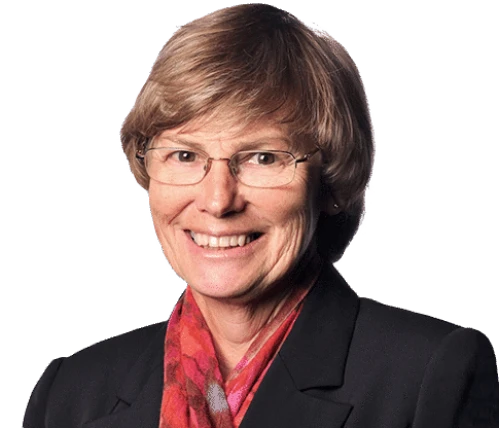The Remote Area Health Corps (RAHC) was established in 2008 as a not-for-profit subsidiary of Aspen Medical to address workforce shortages in remote Aboriginal communities in the Northern Territory.
RAHC facilitates short-term placements to build the pool of health professionals with the skills and capabilities to deliver high-quality, culturally safe care. Although initially aimed towards recruiting GPs, most placements over recent years have been for nursing and allied health professionals.
The Department of Health and Aged Care asked us to evaluate RAHC and how the model was being implemented. It was the first evaluation in five years and built on the previous evaluation.
RAHC was established to address workforce challenges in the NT
Health outcomes for First Nations people in remote areas of the NT are significantly lower than elsewhere in Australia. (For example, life expectancy for Aboriginal and Torres Strait Islander people in the NT outside of Darwin is 75.1 years, compared to 82.5 years in Darwin and more than 84 years in Sydney, Melbourne and Perth.) Higher rates of chronic disease and key health risk factors, particularly for Aboriginal and Torres Strait Islander people in remote areas, are well documented.
(The RAHC evaluation refers to Aboriginal communities and Aboriginal Territorians, as this is the terminology used by NT Health. This should be read as encompassing all people who identify as Aboriginal, Torres Strait Islander, or both.)
Attracting, recruiting and retaining workers is a constant and ongoing challenge in the NT’s remote Aboriginal communities. In 2023, the Rural Workforce Agency NT noted that there had been a rapid increase in the shortage of primary healthcare workers, including general practitioners, nurses, allied health practitioners, and Aboriginal Health Practitioners. The availability of workers in the NT to fill these shortages has not changed in recent years, Australian Government data shows.
The RAHC program aims to give remote NT primary healthcare clinics short-term access to healthcare professionals from urban areas who have completed RAHC’s thorough cultural orientation training to ensure a culturally responsive workforce. RAHC is delivered by a not-for-profit subsidiary of Aspen Medical and overseen by a majority Aboriginal and Torres Strait Islander board.
We used a mixed-methods evaluation underpinned by a robust framework
We started our evaluation by collaborating with the department and RAHC to develop a program logic, which mapped out what was intended to be delivered under RAHC and to what extent these outputs and outcomes were being achieved.
We then used an adaptation of the evaluation criteria developed by the OECD (Organisation for Economic Co-operation and Development) Development Assistance Committee (DAC) as our framework for analysis and reporting. The framework guided us to understand RAHC’s relevance and coherence (both when developed, and at the time of the evaluation); effectiveness and impact; efficiency; and sustainability.
We used a mixed-methods approach that drew from:
- qualitative and quantitative program data provided by RAHC
- interviews with representatives from the Department of Health and Aged Care, RAHC, the Aboriginal community-controlled sector, NT Health, and current and former RAHC health professionals
- a survey of current and former RAHC health professionals
- site visits to eight clinics that had recently received RAHC health professionals
- routinely collected health workforce data
- published literature.
The evaluation recommended some refinements to the model
The evaluation report was released publicly in January 2024. The evaluation found that RAHC is a well-regarded provider of health professionals to fill short-term, on-demand workforce shortages. RAHC health professionals were seen as culturally competent and as a “safe pair of hands” compared to health professionals from other short-term placement agencies.
The evaluation highlighted areas where the program could be reviewed and refined. This included:
- Rebuilding the pool of workers willing, eligible and able to complete placements. The evaluation found the pool of workers eligible for placements had stagnated (and in some cases shrunk).
- Refocusing efforts to recruit and place a wide range of health professionals. While RAHC intended to provide a wide range of health professionals, the evaluation found that in recent years most placements have been nurses or oral health professionals.
- Reviewing the model to ensure ongoing value for money. The evaluation found there is an opportunity for the model to go beyond acting solely as a short-term placement agency in competition with other (non-subsidised) providers. The model could contribute to broader government strategic outcomes such as supporting capability uplift, testing innovative employment models, and bolstering multi-disciplinary care arrangements.
The evaluation found that RAHC had been successful in partnering with stakeholders to design culturally appropriate and sustainable solutions to workforce challenges. These features include Aboriginal governance and leadership structures, a strong focus on workforce development, and status as a not-for-profit agency with good links to the department.
What you can learn from this evaluation
Addressing chronic workforce shortages – particularly in remote and very remote areas – will require concerted effort across all levels of government and collaborative effort from government, the Aboriginal community-controlled health sector, peak bodies, and the private sector.
Aboriginal-led governance and leadership structures – such as RAHC’s majority Aboriginal and Torres Strait Islander board – are critical to ensure that programs are co-designed and delivered in culturally safe and appropriate ways.



